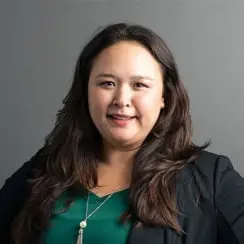 | 1.5 LU |
 | 1.5 LU |
Our brains are wired to find meaning and patterns within the complex and multi-layered world we live in. This human propensity to categorize, define groups, and create order helps us to efficiently sift through the abundance of information embedded within our sensory, social, material, and technological environment, but it can also create artificial divides. Creativity vs. reason, right brain vs. Left, can be convenient silos that oversimplify, dichotomize, and stifle interconnected thinking. In traditional schooling, learning is compartmentalized by subject matter, offering students few opportunities to build their capacity for solving the complex, interdisciplinary problems they will face in the real world. How can learning environments break down barriers and create space for students to activate their whole brain in learning? To meet rising demand for creative innovation, critical thinking, and interdisciplinary problem-solving, learning environments need to promote synergy between an intuitive and imaginative perspective (art), and a measured, systematic approach (science). Challenging right vs. left brain dominance theory and exploring forward-thinking learning models that embody a whole-brain approach, this session will present design strategies for a “modern renaissance” in education – bringing art and science together to foster a culture of innovation. Session attendees will be engaged in a hands-on activity that will require them to solve a problem from one discipline using the tools of another.
Learning Objectives:

Chloe is a Design Researcher in Corgan’s education studio where she contributes research-based insight and design strategies to K-12 and higher education projects. She earned a Master of Architecture from the University of Kansas, a Master of Science in Applied Cognition and Neuroscience from the University of Texas at Dallas, and a certificate in Permaculture Design. Chloe has a passion for the altruistic nature of designing spaces for learning and for finding meaningful ways to promote health, wellbeing, and cognitive performance through thoughtful design and the integration of nature in the built environment.

Beverly is a Vice President at Corgan with 15+ years of experience developing innovative learning environments that prioritize student engagement and wellbeing. Her expertise in the cognitive development of students and the impact their environment has on them allows her to lead teams in developing sensory-rich spaces for students to thrive. Beverly is a registered architect in the State of Texas and received Master of Architecture and Bachelor of Architectural Studies degrees from University of Louisiana Lafayette.
This track focuses on Resiliency and addresses how learning environments support the development of students and communities that have the strength and flexibility to withstand adversity and adapt to change. The COVID-19 pandemic demonstrated the essential role that schools have in stabilizing communities during a time of crisis. How do schools support the development of strong community culture among teachers and students? How do schools foster physical and mental health and wellness to ensure all are ready and supported to learn? How do we create learning environments that are strong in intent yet adaptable to change? How do we learn from what does not work and further, learn to take risks daily to expand our comfort zone? What can we learn from research and our responses to past events to inform how to build toward a resilient future where we can withstand what crises and challenges the future brings? Topic areas, seen through the lenses of both Art and Science, include sustainability, physical and mental health, community, school climate and culture, safety, and security.
Primary Core Competency
Educational Visioning: Exhibits an understanding of best and next practices related to educational leadership, programming, teaching, learning, planning and facility design. Establishes credibility with educators, community members and design professionals while conceiving and leading a community-based visioning process. Demonstrates the ability to articulate the impact of learning environments on teaching and learning and uses that ability to facilitate a dialogue that uncovers the unique needs and long-range goals of an educational institution and its stakeholders – translating that into an actionable written/graphic program of requirements for the design practitioner.